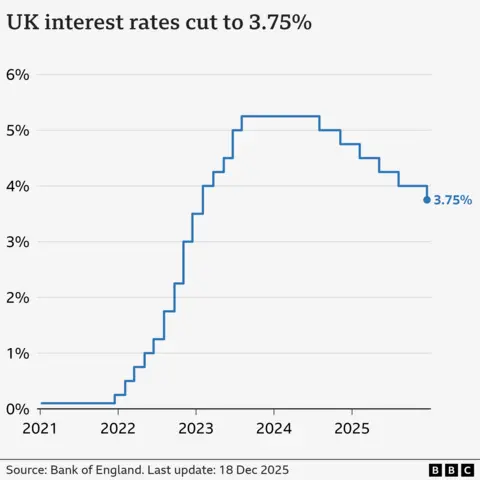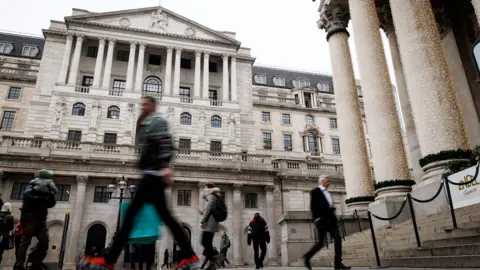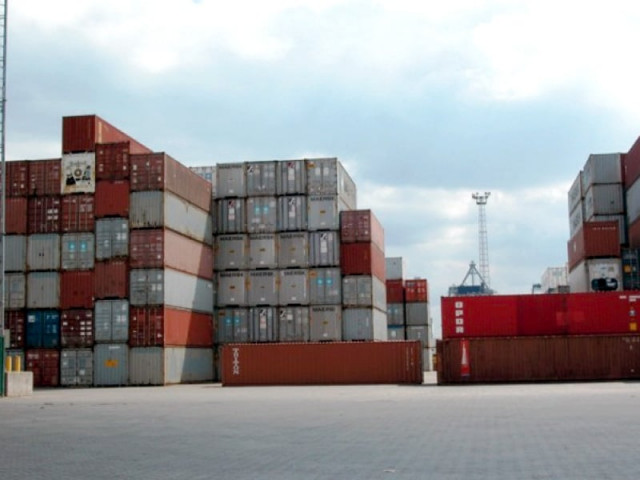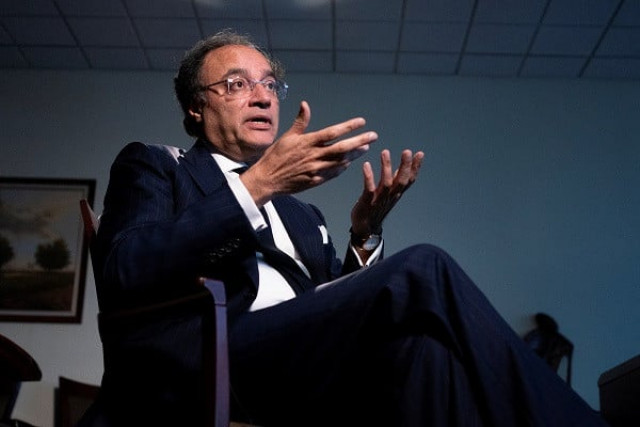Business
Merck tops estimates on Keytruda strength and narrows profit outlook, as it lowers estimated tariff hit

Merck on Thursday reported third-quarter earnings and revenue that topped estimates as it saw strong demand for its cancer immunotherapy Keytruda.
The drugmaker also narrowed its full-year profit outlook to reflect lower estimated tariff costs, among other factors. Shares of Merck closed flat on Thursday.
Sales of Keytruda topped $8 billion for the first time in a quarter, rising 10% from the same period a year ago. Revenue from the drug of $8.14 billion came in just slightly under the $8.24 billion analysts were expecting, according to StreetAccount estimates.
The results come as Merck slashes $3 billion in costs by the end of 2027, and prepares to offset revenue losses from the upcoming patent expiration of Keytruda in 2028.
The pharmaceutical giant now expects its 2025 adjusted earnings to come in between $8.93 and $8.98 per share. That compares with its previous outlook of $8.87 to $8.97.
Merck said that reflects several new items, including “lower estimated costs related to the impact of tariffs.” During the previous two quarters, the company included a $200 million estimated hit from tariffs that President Donald Trump has implemented to date, but not his planned pharmaceutical-specific levies. Merck did not disclose a new estimate for the cost of existing tariffs.
Merck said the guidance also reflects a benefit from an amended deal with AstraZeneca related to a pill for a specific genetic disorder, partially offset by costs tied to the company’s now-completed acquisition of Verona Pharma.
Merck expects revenue for the year to come in between $64.5 billion and $65 billion, narrowed on both ends from its previous guidance of $64.3 billion to $65.3 billion.
Here’s what Merck reported for the third quarter compared with what Wall Street was expecting, based on a survey of analysts by LSEG:
- Earnings per share: $2.58 adjusted vs. $2.35 expected
- Revenue: $17.28 billion vs. $16.96 billion expected
The company posted net income of $5.79 billion, or $2.32 per share, for the quarter. That compares with net income of $3.16 billion, or $1.24 per share, for the year-earlier period.
Excluding acquisition and restructuring costs, Merck earned $2.58 per share for the third quarter.
Merck raked in $17.28 billion in revenue for the quarter, up 4% from the same period a year ago.
Merck continued to see trouble with China sales of Gardasil, a vaccine that prevents cancer from HPV, the most common sexually transmitted infection in the U.S.
In February, Merck announced a decision to halt shipments of Gardasil into China beginning that month. In July, CFO Caroline Litchfield said the company will not resume shipments to China through at least the end of 2025, noting that inventories remain high and demand is still soft.
Gardasil generated sales of $1.75 billion for the quarter, down 24% from the same period a year ago due to lower demand in China. Still, that was in line with what analysts were expecting, according to StreetAccount.
Investors are eager for additional updates on Gardasil’s presence in China and any details from Merck on potential drug pricing deals with Trump as part of his controversial “most favored nation” policy. Trump has so far inked agreements with Pfizer, AstraZeneca and EMD Serono, the largest fertility drug manufacturer in the world, that aim to make their medicines easier for Americans to access.
In an earnings call on Thursday, Merck CEO Rob Davis said the company shares the Trump administration’s goal of “decreasing patient out-of-pocket costs for our products in the U.S. while at the same time realizing greater prices for our medicines and vaccines in countries that have not been paying fair value for the innovation we provide.”
Merck is “actively engaged” with the administration to achieve those efforts.
Pharmaceutical, animal health sales
Merck’s pharmaceutical unit, which develops a wide range of drugs, booked $15.61 billion in revenue during the third quarter. That’s up 4% from the same period a year earlier.
The increase in Keytruda was driven by higher uptake of the drug for earlier-stage cancers and strong demand for the treatment for metastatic cancers, which spread to other parts of the body, the company said.
Meanwhile, Merck’s newer drug Winrevair, which is used to treat a rare, deadly lung condition, recorded $360 million in sales for the quarter. Analysts had expected the medication to bring in $413 million, according to StreetAccount estimates.
Winrevair’s growth largely reflects higher uptake in the U.S. But it was partially offset by the timing of distributor purchases of the drug and lower net pricing in the country, mainly due to changes to Medicare prescription drug plans.
Merck’s animal health division, which develops vaccines and medicines for dogs, cats and cattle, posted nearly $1.62 billion in sales, up 9% from the same period a year prior. The company said that mainly reflects higher demand for livestock products.
Correction: Sales for Merck’s animal health division were up 9% from the same period a year prior. An earlier version misstated the percentage.
Business
US markets today: Wall Street jumps after softer inflation update; Micron sparks AI rebound – The Times of India

US stock markets rallied on Thursday after a better-than-expected inflation update eased concerns over the interest rate outlook, while a strong earnings report from Micron Technology helped arrest the recent slide in artificial intelligence-linked stocks, AP reported.The S&P 500 rose about 1%, snapping a four-session losing streak. The Dow Jones Industrial Average climbed over 350 points, while the Nasdaq Composite gained around 1.4%, led by technology and semiconductor shares.Investor sentiment improved after data showed US inflation slowed to 2.7% last month, coming in below economists’ expectations. While inflation remains above the Federal Reserve’s 2% target, the softer reading raised hopes that the central bank could continue cutting interest rates next year to support a slowing job market.Some caution persisted with market participants noting that recent economic data have been volatile following the US government shutdown, and that upcoming inflation reports may provide a clearer signal.Technology stocks got a further boost from Micron Technology, which surged nearly 16% after posting stronger-than-expected quarterly profit and revenue and issuing an upbeat outlook. Chief executive Sanjay Mehrotra said demand linked to artificial intelligence accelerated across Micron’s businesses, reinforcing its role as a key “AI enabler”.The results helped ease worries that heavy spending on AI by major companies may not yield sufficient returns. Shares of Broadcom and Oracle, which had fallen sharply in recent sessions despite solid earnings, rebounded, while Nvidia also edged higher.Elsewhere, Trump Media & Technology Group jumped sharply after announcing an all-stock merger with nuclear technology firm TAE Technologies, marking its entry into the nuclear power space. Cintas also advanced after reporting strong earnings and announcing a share buyback programme.Global markets were mixed. European stocks posted modest gains after the Bank of England cut interest rates and the European Central Bank held policy steady, while Asian markets ended unevenly.In the bond market, US Treasury yields declined, with the 10-year yield falling to around 4.11%, reflecting optimism following the inflation data.
Business
What the latest interest rates change means for your mortgage, savings and bills

The Bank of England (BoE) announced on Thursday its decision to cut interest rates to 3.75 per cent, the fourth cut of the year.
For December’s vote, the bank’s nine-person Monetary Policy Committee (MPC) showed just a slight swing compared to last time out pre-Budget in November; a 5-4 split then favouring a hold became a 5-4 split in favour of cutting this time, with governor Andrew Bailey a key switcher.
Following falling inflation rates, poor economic figures and rising unemployment, it brings the base rate down to the lowest level in almost three years.
Here’s a brief rundown of what the current interest rate might mean for you:
What does the interest rate mean for mortgages?
Broadly speaking, as increasing interest rates over the last few years have meant mortgage repayments going up, then the reverse also holds true: lower rates, lower repayments. However, there are several important things to note.
Firstly, that it’s only the interest on the repayments which should change – your capital repayments will naturally decrease the more you pay off your mortgage. Secondly, the base rate isn’t the rate you are necessarily charged by your bank or lender for the mortgage – they’ll base theirs off the BoE rate but it doesn’t have to be the same.
More than half a million people do, however, have a mortgage which tracks the BoE interest rate and those will see an immediate change. Far more have fixed-term deals, which expire each year and need renegotiating – almost 2 million homes are expected to seek renewed deals in 2026.
If you’ve got a fixed term on a mortgage plan, you won’t see a change in any case until that comes to an end and you start a new one, but if you’ve already finished and moved onto a standard variable rate (SVR) deal, then you might see a change in your repayments.
New mortgage products tend to be based on swap rates – market agreements based on future expectations of interest rate movements – rather than the current bank rate, which is why there has been a recent battle between lenders dropping their rates even before the cut today.
What about savings accounts?
If you have money in a savings account, it’s the other side of the see-saw: rates going down mean you’ll earn less interest.
Get a free fractional share worth up to £100.
Capital at risk.
Terms and conditions apply.
ADVERTISEMENT
Get a free fractional share worth up to £100.
Capital at risk.
Terms and conditions apply.
ADVERTISEMENT
As there has been a bit of a fierce battle raging among banks and building societies for customers, it’s still possible to get good deals if you are happy to lock in money for a fixed period of time or contribute regular amounts, with several offering more than 4 per cent until recently.
However, it’s likely some will be removed from the market or have their rates altered in the coming days, while many of the best deals in easy access accounts have been below 4.5 per cent for a while now.

There are always terms and conditions to be met, so ensure any accounts you open suit your circumstances, but the opportunity still remains to save and earn money at a better rate than inflation, which currently sits around 3.2 per cent.
Do be aware of the amount of interest you can earn without being taxed, though. If your savings account interest rate isn’t fixed, banks can always change the rate you get up or down.
A tax-efficient way of saving is to use a Cash ISA, where everyone (for now!) has a £20,000 personal allowance each year, which will drop to £12,000 soon with the other £8,000 reserved for tax-free investing.
Bills and repayments
Credit card repayments and other types of personal loans are of course also affected by interest rates, as the amount they all charge for borrowing could be altered.
For credit card users (and especially for Buy Now Pay Later deals), it’s always ideal to pay off the full amount each month if you are able to, to avoid interest being charged at all – depending on your circumstances and the account type, they can be one of the more costly ways to borrow.
Again, it may not be immediate that lenders alter their rates after a base rate change, but get in touch with them to assess your options if you feel your repayments could or should be lower.
Business
Interest rates cut to 3.75% but further reductions to be ‘closer call’

Michael RaceBusiness reporter
 Getty Images
Getty ImagesInterest rates have been cut to 3.75%, the lowest level in almost three years, but further reductions are set to be a “closer call”, the Bank of England has said.
In a knife-edge vote, policymakers voted 5-4 in favour to lower rates from 4% reflecting concerns over rising unemployment and weak economic growth.
The Bank said rates were “likely to continue on a gradual downward path”, but warned judgements on further cuts next year would more contested.
Inflation is now expected to fall “closer to 2%” – the Bank’s target – next year, which is sooner than previous forecasts. However, the economy is predicted to see zero growth in the final few months of this year.
The decision to lower borrowing costs from 4% was widely expected, after figures this week showed inflation, the rate prices rise at, slowed further to 3.2% in the year to November.
“We still think rates are on a gradual path downward but with every cut we make, how much further we go becomes a closer call,” said the Bank’s governor, Andrew Bailey.
While the cut is likely to be good news for people looking to borrow cash or secure a mortgage, savers could see a reduction on their returns.
About 500,000 homeowners have a mortgage that “tracks” the Bank of England’s rate, and Thursday’s cut is likely to mean a typical reduction of £29 in monthly repayments.
Homeowners on standard variable rates are also likely to see lower payments, although the vast majority of mortgage customers have fixed-rate deals so are not affected by the latest decision.
The Bank said that, following the tax and spending policies announced in last month’s Budget and easing oil and gas prices, inflation was likely to fall close to 2% in the spring/summer of next year. Previously it did not expect this to happen until 2027.
Chancellor Rachel Reeves announced the government would cut £150 off household energy bills in the Budget, as well as freeze fuel duty and rail fares.
However, the Bank said weaker economic growth in November had led it to expect zero growth for the final few months of this year.
It said information gathered from businesses around the country suggested a “lacklustre economy”, with firms concerned by the speculation ahead of the Budget.
The Bank said consumers remained “cautious and keenly focused on value for money”, adding that food shops were “smaller than usual”.
“Some supermarkets have been concerned that the Budget will dampen spending on Christmas food and drink, but discounters say that early sales of lowered priced seasonal food are solid so far,” it added.
Latest figures showed the price of food was the main driver behind November’s drop in inflation.
The inflation rate has fallen in recent months, but this drop does not mean that prices are falling, rather they are rising at a slower rate.
Mr Bailey reiterated that the Bank believed inflation had passed its peak.

Reacting to the Bank’s decision, the chancellor said it was the “sixth interest rate cut since the election – that’s the fastest pace of cuts in 17 years, good news for families with mortgages and businesses with loans”.
But shadow chancellor Mel Stride said while lower interest rates would be “welcome news for many families”, the cut reflected “growing concerns about the weakness of our economy”.
“The economic mismanagement of Rachel Reeves has left the Bank of England with an impossible dilemma, balancing high inflation against a fragile economy.”
 EPA
EPAThe Bank, which is independent of the government, sets interest rates in an attempt to try to keep consumer price rises under control.
The theory behind increasing interest rates to tackle inflation is that by making borrowing more expensive, more people will cut back on spending and that leads to demand for goods falling and price rises easing.
But it is a balancing act, as high interest rates can harm the economy as businesses hold off from investing in production and jobs.
The government has made growing the economy its main priority as part of its efforts to boost living standards.
In its most recent Monetary Policy Report, the Bank predicted UK economic growth would be 1.5% this year, but forecast it would fall to 1.2% next year before rising to 1.6% in 2027 and 1.8% in 2028.

Get our flagship newsletter with all the headlines you need to start the day. Sign up here.
-

 Business5 days ago
Business5 days agoHitting The ‘High Notes’ In Ties: Nepal Set To Lift Ban On Indian Bills Above ₹100
-

 Politics1 week ago
Politics1 week agoTrump launches gold card programme for expedited visas with a $1m price tag
-

 Tech1 week ago
Tech1 week agoJennifer Lewis ScD ’91: “Can we make tissues that are made from you, for you?”
-

 Business1 week ago
Business1 week agoRivian turns to AI, autonomy to woo investors as EV sales stall
-

 Sports1 week ago
Sports1 week agoPolice detain Michigan head football coach Sherrone Moore after firing, salacious details emerge: report
-

 Fashion1 week ago
Fashion1 week agoTommy Hilfiger appoints Sergio Pérez as global menswear ambassador
-

 Business1 week ago
Business1 week agoCoca-Cola taps COO Henrique Braun to replace James Quincey as CEO in 2026
-

 Tech1 week ago
Tech1 week agoGoogle DeepMind partners with UK government to deliver AI | Computer Weekly












